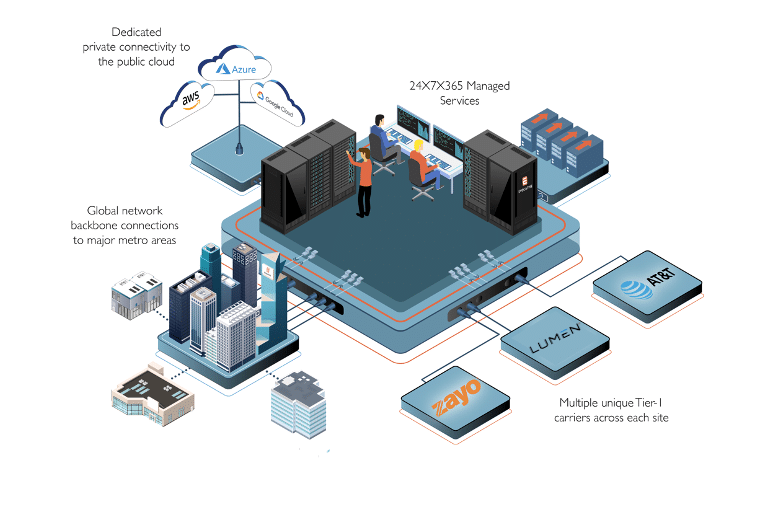Acting as a bridge between an ISP or customer network and the rest of the global Internet, IP transit enables traffic to flow and reach a desired destination by crossing—"transiting"—one or more transit provider networks, facilitating critical connectivity, communication, and data exchange between customers, partners, and service providers.
With IP transit in the picture, organizations can leverage the implementation and management of the transit provider network delivered by specialized transit providers so they can, instead, focus on their core operations to drive innovation, create value, and enable growth.
Peering, which has its own role to play in the efficient operation of the Internet—especially when regional connectivity is an issue. It is essentially a reciprocal relationship enabled by two or more parties that allow networks to exchange traffic in one of two forms:
Public Peering: Offers the exchange of traffic where one network can access multiple networks through a single Internet Exchange Point (IXP).
Private Peering: Provides the exchange of private traffic through a direct connection between two networks, typically private facilities.
While IP transit and peering may appear similar, there are several differences that must be considered when making the choice for one over the other. The following are two items to recognize that could have a direct impact on business operations:
Routing Responsibility: IP transit providers guarantee traffic delivery to any destination on the Internet. Whereas, in peering, each network only exchanges traffic between its authorized counterparts, requiring a separate Internet transit provider or peering partner to reach networks outside of the agreement.
Infrastructure Management: IP transit providers typically deliver the traffic exchange infrastructure and service, bypassing the need for the users of the service to invest in network setup and maintenance. On the other hand, peering requires the connected parties to invest in considerable infrastructure deployment and management to accommodate the sizable volume of traffic often exchanged between peers.
In some instances, a combination of IP transit and peering may make sense. When working with a network provider, be sure to check to see if they offer support for this hybrid model.
With IP transit, a customer—often an ISP or large business—connects their network to the Internet transit provider's network, usually at a data center, allowing their Internet traffic to be routed to any location on the global Internet via the transit provider's expansive network infrastructure.
For Evocative IP transit environments, Internet access from within the
data center includes a single physical connection to the customer environment. Internet access to the customer premises will always be a single connection. Internet access to a customer's premises will be addressed as on-net (a location where such service is already available) or off-net (where such a service is new).
Evocative’s enterprise-class IP Transit solutions give you access to a blend of transit and peering connections across several Tier-1 upstream transit providers and peering partners unique from other network service providers to ensure your IP packets can reach any destination and that your infrastructure can be reached from anywhere.
The Evocative Global Network connects all Evocative data centers and points of presence to offer a full suite of colocation, network, and infrastructure services with an approach that ensures:
To learn more about Evocative’s IP transit solution, visit our
IP Transit page.
If you have questions about how Evocative can provide you with a fast, fault-tolerant Internet connection in a cost-effective package, we invite you to
register for a whiteboard session.
Citations:
1. TeleGeography,
The State of the Network: 2023 Edition, May 2023

